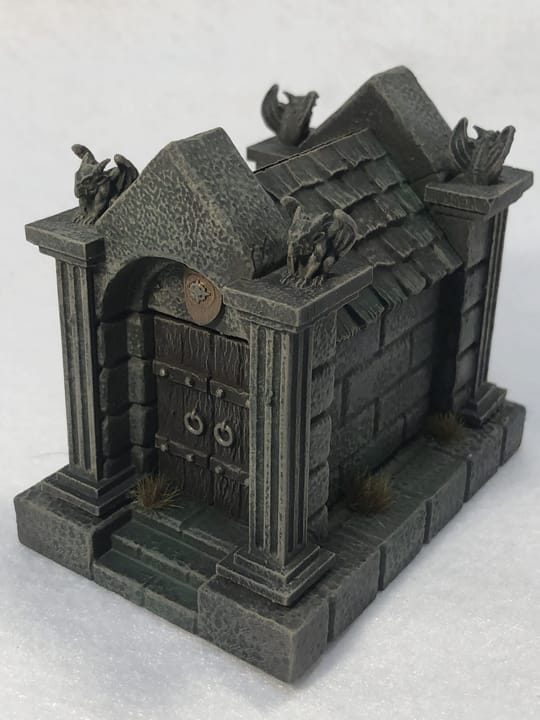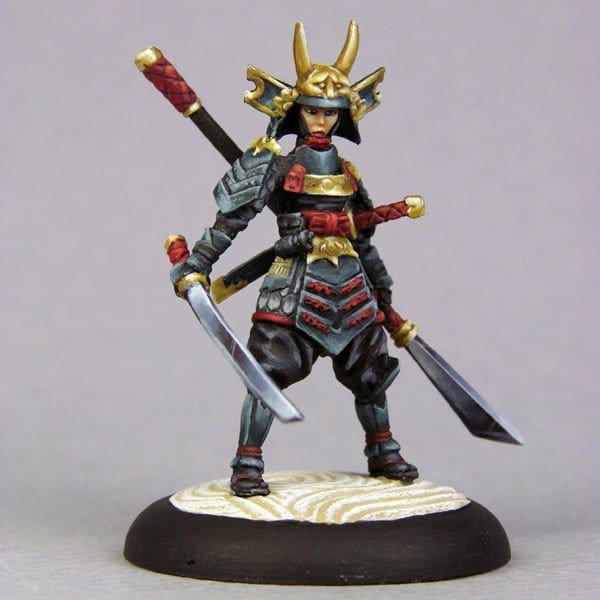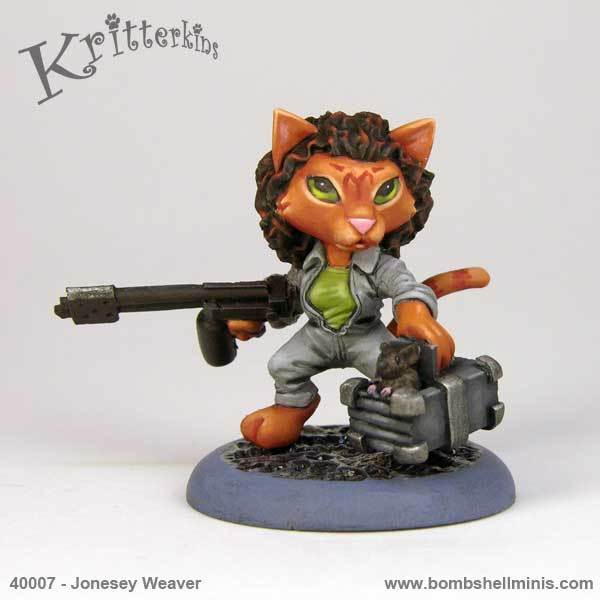With a new Kickstarter campaign from Tomb Guardians focused on raising funds to produce a new set of miniatures, Queen of the Damned: Velrath’s Vampires, much of the work will depend on the sculptors. One of them is Patrick Keith, who was able to talk with TechRaptor over email about getting involved with the vampiric project and the details of his sculpting career.
We also spoke to Tomb Guardians' owner, Cass Suwinski, about the Kickstarter. You can find it here.

TechRaptor: Could you please tell us more about yourself?
Patrick Keith: Sure! I’m Patrick Keith, a full-time freelance sculptor who has done work for over thirty different miniatures companies, large and small, in the tabletop gaming industry. I also produce my own boutique line of models as Bombshell Miniatures, which we launched in 2012 by funding our first Kickstarter project.

TechRaptor: How did you get into sculpting?
Patrick Keith: Since before I started school I was making my own figures like dinosaurs, King Kong, and characters from Planet of the Apes, with plastilene modeling clay. It was more intuitive to me than drawing or painting, even though I enjoy both of those things too.
TechRaptor: What drew you to creating miniatures for games?
Patrick Keith: I was playing D&D and collecting various Ral Partha and Grenadier figures since the late 70’s, but really got serious about it when Warhammer came out. I got into playing Games Workshop games and painting their minis around 1990. I was working at a local comic/game store where several of us played and painted. This was also about the time the very first Reaper miniatures were released.

I was converting minis for my own armies and eventually did a few full sculpts of things. Over about twenty years I had an off-again/on-again interest in sculpting minis, even while I was doing that semi-pro. So, I was working at the helpdesk for Blockbuster Video at their central distribution center while moonlighting as a part-time freelance sculptor. After getting laid off when Blockbuster closed up shop, I bounced to another job, but hated it. It was then I knuckled down and really became determined to sculpt full-time. Sculpting was really the only type of art I could [be] paid for consistently, where I was getting professional level results. This was around 2009, and I started doing a lot of work for different clients like Reaper, Privateer Press, and Dark Sword after that.
TechRaptor: Could you tell us more about the Kickstarter for Queen of the Damned: Velrath's Vampires, and how you became involved with the project?
Patrick Keith: For several months I had been seeing pics of the digital sculpts by Bobby Jackson and Jason Wiebe along with painted minis by Mary Profitt that Cass [Suwinski] was posting to promote his first Kickstarter project. I felt a little left out in a way, and was planning to contact Cass [owner of Tomb Guardians] to see if he needed anything for the project. He beat me to the punch and contacted me after seeing a pic I had shared of a sculpt for another company. He was interested in having me sculpt a few characters for another upcoming range. In the interim, he needed some scenic pieces so I did a few treasure piles at first. For Velrath’s Vampires, I sculpted a range of headstones, a few coffins, and a crypt/mausoleum.
TechRaptor: What influences your art?
Patrick Keith: I really get inspired by other sculptors and concept artists. I love surfing ArtStation to see all of the fantastic work posted there. I also have a few custom Pinterest searches that have some really cool art. I also get inspired by film or television characters. Frequently I will see a cool design or character in a movie and will instantly get an inspiration to sculpt something like it.

TechRaptor: What's your favorite thing to sculpt? Is it a creature, a prop, a concept, or something else?
Patrick Keith: I’m pretty well known for sculpting female characters. It’s a difficult thing to get right and I love the challenge. Plus, at the time I started sculpting, diverse female character miniatures were pretty hard to find. I started off doing a lot of female characters for Reaper’s Chronoscope and Pathfinder lines, and that allowed me to expand into other things. This was what prompted me to launch the Bombshell Babes line, which is exclusively a variety of female characters in practical costuming.
TechRaptor: What are your thoughts on traditional sculpting, digital sculpting, and 3D printing?
Patrick Keith: To me, digital sculpting is just another tool in the toolbox. The underlying foundational knowledge is the same, even though the interactive experience couldn’t be more different. It’s still important to have a firm grasp of composition, balance, and form regardless of what medium you’re working in. You can really see when a digital sculptor doesn’t have that knowledge base, just like you can if it’s in clay. The process and muscle memory for each type of sculpting, digital vs. traditional, is completely different and not related at all.

Traditional sculpting requires a lot more dexterity for handling tools, strength in the fingers to work the materials, like twisting and bending stiff wire, kneading firm clay; and cutting, sanding, and filing various objects. It takes an extremely delicate touch to shape details and manipulate the various tools to get the desired result, while exercising breath control like a long range sniper. Plus, magnification of any kind is a must to really see what you are doing.
Digital sculpting is more like a video game. It’s basically just scribbling on the tablet or screen with a stylus, or mouse. Knowing the keyboard combos, and what the software does is a huge learning curve. Once that’s down to memory, all of the motor skills are pretty much the same. You can zoom in as much as you want to see small things. Plus, you have mirrored symmetry, copy/paste, and UNDO! I couldn’t tell you how many times I’ve wanted to hit Ctrl-Z when sculpting traditionally.

Regardless, if a sculptor has a firm understanding of anatomy, balance, and composition, they will have a much more successful experience when sculpting. That type of foundational knowledge is essential whichever way you are sculpting.
TechRaptor: Thanks for sharing, and for taking the time to talk with us.
Have a tip, or want to point out something we missed? Leave a Comment or e-mail us at tips@techraptor.net












